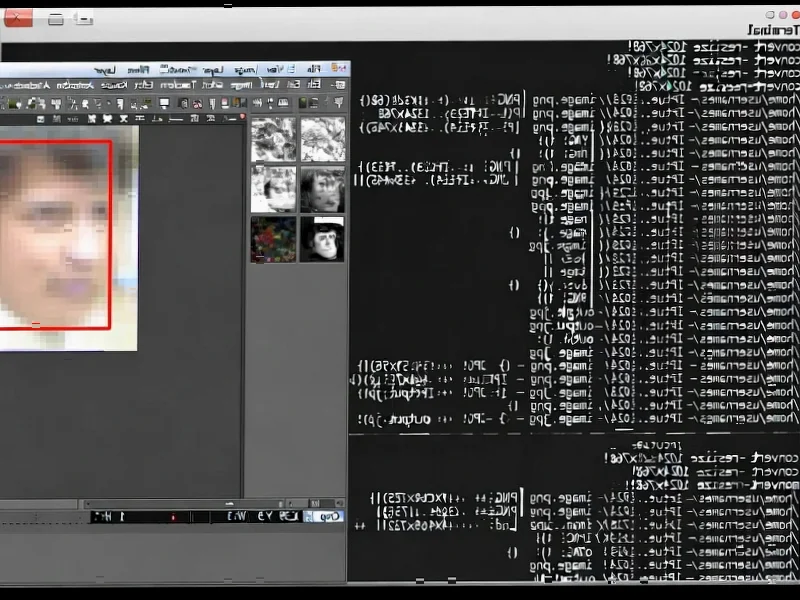According to Thurrott.com, Apple has released iOS 26.1, iPadOS 26.1, and macOS 26.1 with several user experience refinements including a new “tinted” option for Liquid Glass that reduces transparency effects. The updates expand Apple Intelligence language support to Chinese (traditional), Danish, Dutch, Norwegian, Portuguese (Portugal), Swedish, Turkish, and Vietnamese, while AirPods Live Translation adds Chinese (Mandarin simplified and traditional), Italian, Japanese, and Korean. Other changes include a toggle to disable the lock screen camera swipe gesture, customizable Local Capture file locations, and the return of Slide Over multitasking on iPad after its removal in iPadOS 26. These incremental updates represent Apple’s ongoing refinement of its mature operating system platform.
The Technical Evolution of Liquid Glass
The new “tinted” option for Liquid Glass represents a significant technical refinement in Apple’s visual design language. Liquid Glass, which debuted as a system-wide transparency effect, creates depth and hierarchy through blurred backgrounds and semi-transparent surfaces. The technical challenge with such effects has always been accessibility and readability – while visually appealing, excessive transparency can reduce text legibility and create visual noise. The tinted option likely works by applying a subtle color overlay or increasing the opacity of the blur layer, essentially creating a more opaque version of the existing effect. This approach maintains the dimensional quality of the interface while improving contrast ratios for better readability, particularly in high-ambient light conditions or for users with visual impairments.
The Technical Infrastructure Behind Language Expansion
Apple’s expansion of Apple Intelligence to eight additional languages represents a substantial engineering achievement in natural language processing. Each language addition requires training separate machine learning models for understanding, generation, and contextual awareness. The technical complexity involves not just direct translation but cultural context, idiomatic expressions, and language-specific syntax patterns. For languages like Chinese with its character-based writing system and Turkish with its agglutinative structure, the models must be fundamentally different from those used for Germanic or Romance languages. The Apple Intelligence platform likely uses a modular architecture where language-specific components can be updated independently, allowing for this gradual expansion without requiring full system updates.
iPad Multitasking’s Strategic Recalibration
The return of Slide Over on iPadOS represents an interesting case study in feature lifecycle management. When Apple removed Slide Over in iPadOS 26, it was likely part of a broader simplification of the multitasking system that had become increasingly complex. However, user feedback and usage patterns apparently demonstrated that the feature served a unique workflow need that couldn’t be fully replaced by Stage Manager or Split View. The technical implementation of bringing back Slide Over suggests Apple maintains deprecated features in a modular way, allowing for relatively quick reintroduction when needed. This approach demonstrates the company’s evolving understanding of how professional users leverage iPad multitasking capabilities for specific workflows that demand floating, temporary application access.
The Engineering Behind Accessibility Refinements
The new toggle to disable the lock screen camera swipe gesture highlights Apple’s continued focus on reducing accidental interactions. From a technical perspective, this involves modifying the gesture recognition system to include conditional logic based on user preferences. The system must distinguish between intentional swipes and accidental brushes while maintaining responsiveness for users who want the feature. Similarly, the Local Capture file location customization addresses user workflow needs by integrating with the file system abstraction layer. These seemingly small changes require significant testing to ensure they don’t introduce new bugs or performance issues in the highly optimized iOS environment.
What These Updates Reveal About Platform Strategy
These incremental updates signal that Apple’s operating systems have reached a stage of maturity where refinement takes precedence over revolutionary changes. The focus on accessibility options, language expansion, and workflow customization suggests Apple is listening to specific user feedback rather than pushing entirely new paradigms. This approach is characteristic of mature platforms where breaking changes become increasingly costly for both developers and users. The timing of these updates, coming after the major iOS 26 release, follows Apple’s established pattern of using point releases to address user feedback and refine features based on real-world usage data from the broader user base.




